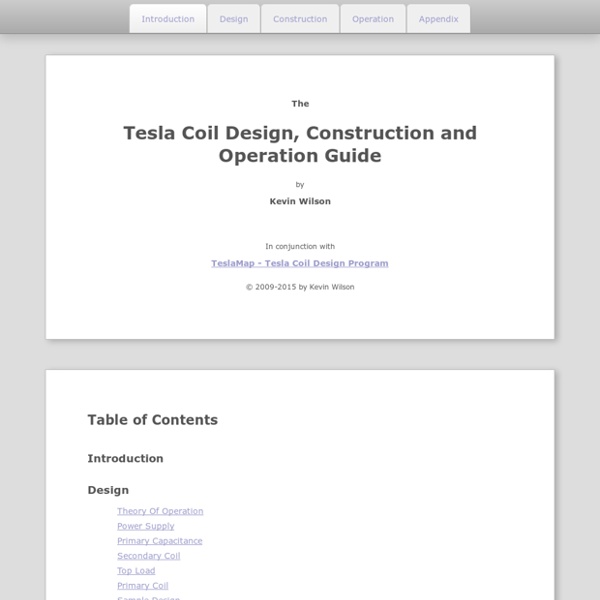Wireless energy transfer
The most common form of wireless power transmission is carried out using direct induction followed by resonant magnetic induction. Other methods under consideration are electromagnetic radiation in the form of microwaves or lasers[1] and electrical conduction through natural media.[2] Electric energy transfer[edit] An electric current flowing through a conductor, such as a wire, carries electrical energy. In a direct current circuit, if the current is continuous, the fields are constant; there is a condition of stress in the space surrounding the conductor, which represents stored electric and magnetic energy, just as a compressed spring or a moving mass represents stored energy. Any change in the electrical conditions of the circuit, whether internal[5] or external[6] involves a readjustment of the stored magnetic and electric field energy of the circuit, that is, a so-called transient. Electromagnetic induction[edit] Electrodynamic induction method[edit] Electromagnetic radiation[edit]
Tesla coil
A Tesla coil is an electrical resonant transformer circuit invented by Nikola Tesla around 1891.[1] It is used to produce high-voltage, low-current, high frequency alternating-current electricity.[2][3][4][5][6][7][8] Tesla coils can produce higher voltages than electrostatic machines,[citation needed] which are another source of artificial high-voltage discharges. Tesla experimented with a number of different configurations consisting of two, or sometimes three, coupled resonant electric circuits. Tesla used these coils to conduct innovative experiments in electrical lighting, phosphorescence, X-ray generation, high frequency alternating current phenomena, electrotherapy, and the transmission of electrical energy without wires. Tesla coil circuits were used commercially in sparkgap radio transmitters for wireless telegraphy until the 1920s,[1][9][10] and in medical equipment such as electrotherapy and violet ray devices. Theory[edit] History[edit] 1902 design[edit] Tesla coil (discharge).
Tesla electric car
American automotive and energy company Tesla, Inc. is an American electric vehicle and clean energy company based in Palo Alto, California. Tesla's current products include electric cars, battery energy storage from home to grid-scale, solar panels and solar roof tiles, as well as other related products and services. In 2020, Tesla had the highest sales in the plug-in and battery electric passenger car segments, capturing 16% of the plug-in market (which includes plug-in hybrids) and 23% of the battery-electric (purely electric) market. Tesla has been the subject of numerous lawsuits and controversies arising from statements and acts of CEO Elon Musk, allegations of creative accounting, allegations of whistleblower retaliation, alleged worker rights violations, and allegedly unresolved and dangerous technical problems with their products. History Founding (2003–2004) Roadster (2005–2009) IPO, Model S, and Model X (2010–2015) SolarCity and Model 3 (2016–2018) Global expansion (2019–present)
Nikola Tesla
Nikola Tesla (Serbian Cyrillic: Никола Тесла; 10 July 1856 – 7 January 1943) was a Serbian-American[3][4] inventor, electrical engineer, mechanical engineer, physicist, and futurist who is best known for his contributions to the design of the modern alternating current (AC) electricity supply system.[5] Born and raised in the Austrian Empire, Tesla received an advanced education in engineering and physics in the 1870s and gained practical experience in the early 1880s working in telephony and at Continental Edison in the new electric power industry. He emigrated to the United States in 1884, where he would become a naturalized citizen. He worked for a short time at the Edison Machine Works in New York City before he struck out on his own. With the help of partners to finance and market his ideas, Tesla set up laboratories and companies in New York to develop a range of electrical and mechanical devices. Early years Tesla's baptismal record, 28 June 1856 Working at Edison A move to the US



